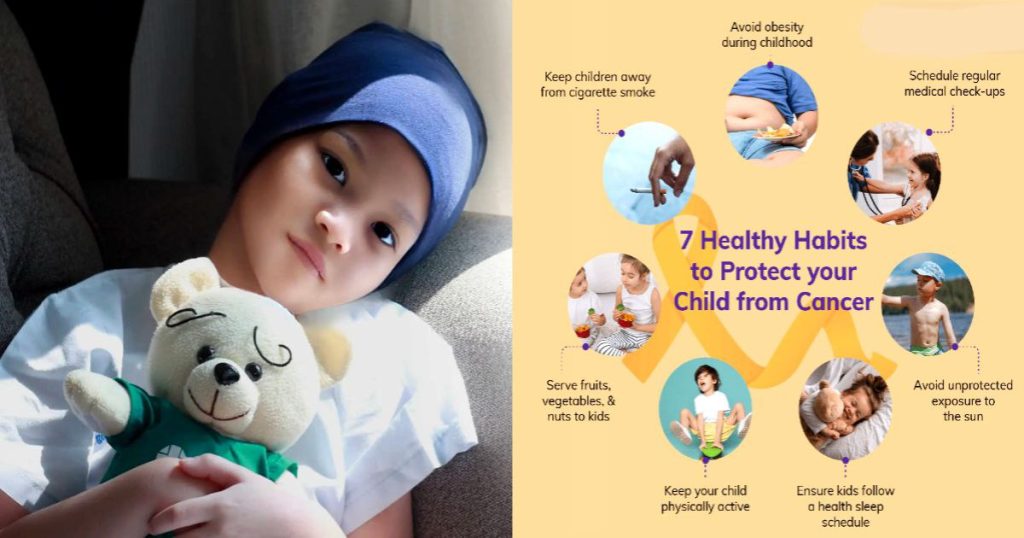Story Highlights: Childhood cancer is a horrible disease that impacts not only the kid but also their family and communities. Although, advances in the treatment of pediatric cancer have been achieved but much more work needs to be done to battle this illness.
Childhood Cancer in Indonesia: In News
Mr. Andrew Maruli David Manullang was a lively and vibrant 11-year-old when he started feeling tired and losing weight in early 2000. He became weaker as a result of these symptoms, which were accompanied by repeated fevers and stomach problems.
The child’s mother Pinta Manullang took her eldest son to the doctor when the symptoms persisted. His blood test report shows Andrew had an extraordinarily high leukocyte count. Following a bone marrow aspiration, the doctor diagnosed the youngster with leukemia.
Worldwide, fifty percent of children with cancer are diagnosed late, which substantially influences their survival statistics. A lot of people still feel that cancer only affects adults, while in fact, it may affect children as well. Because of delayed diagnosis, only 20% of children with cancer survive to adulthood.
According to World Health Organization estimates, 8,678 Indonesian children between the ages of 0 and 14 would be diagnosed with cancer in 2020. This was also the highest figure among Southeast Asian countries. Despite this, Indonesia has just 60 pediatric oncologists-hematologists and 14 facilities that can treat pediatric cancer.
Causes of Childhood Cancer
While adults may avoid some cancers by leading a healthy lifestyle, children’s malignancies cannot be avoided. There is no childhood cancer prevention and doctors are still unsure of the specific cause.
Yet, childhood cancers are thought to be produced by the combination of four factors: genetics, chemicals, infections, and radiation.
The majority of childhood cancers have unknown origins. A hereditary mutation accounts for about 5% of all childhood malignancies (a genetic mutation that can be passed from parents to their children).

Like in adults, it is believed that most childhood cancers arise as a result of gene abnormalities that cause unchecked cell development and ultimately cancer.
But pinning down possible environmental factors that lead to pediatric cancer has proven challenging, partly because childhood cancer is uncommon and partly because it can be challenging to ascertain what exposures young children may have had during the early stages of development.
Leukemias are the most prevalent kind of cancer in children (ages 0 to 14 years), followed by brain and other CNS cancers, lymphomas, neuroblastoma, kidney tumors, and malignant bone tumors.
Also Read: Cancer: Medical Symptoms, Types, Groundbreaking Developments and Preventions
Symptoms of Childhood Cancer
One of the most frequent childhood cancer symptoms is abrupt weight loss and tiredness. Cancer cells are incredibly intelligent. They create a chemical that stimulates the formation of new blood vessels, which take nutrients from the children’s food, making them thin and feeble.
Parents should be concerned if their children develop unexplained bruises and nosebleeds, which are common indicators of leukemia. Leukemia is the most frequent malignancy among children worldwide, including in Indonesia.
Children with brain cancer frequently endure severe nausea and vomiting. Vomiting from brain cancer is frequently intense and projectile.

Conversely, a white spot in the pupil of your child’s eye can suggest that they have retinoblastoma, an eye cancer that begins in the retina. If you observe a white spot in the pupil of the eye, send your child to an ophthalmologist immediately. A simple gadget called an ophthalmoscope can be used by the doctor to confirm whether it’s cancer or not.
While washing their children, parents should take the time to look for any unusual lumps in their bodies. Parents should be concerned if they discover a painless lump in their child’s body, especially if it becomes larger by the day. Always assume the very worst.
Also Read: Yoga set to be introduced in Saudi Arabian universities: Report
Childhood Cancer Awareness Month: September

A gold ribbon is displayed in the month of September, to recognize Childhood Cancer Awareness Month. Childhood Cancer Awareness Month was established to increase awareness of pediatric cancer, which is still the greatest cause of death by illness among children under the age of 14.
Every September, advocacy groups, healthcare institutions, patients, and families work together to raise awareness about children’s cancer.
On February 15, International Childhood Cancer Day is observed, a global collaborative initiative to raise awareness of childhood cancer and to demonstrate support for children and adolescents with cancer, survivors, and their families.
Also Read: RBI imposes Rs 3.06 Crore penalty on Amazon Pay (India)
Summing Up
Almost 300,000 families worldwide came to know each year that their kid has cancer. Childhood cancer not only hurts a child’s health and development but also their family and friends.
Combating juvenile cancer necessitates a diverse approach that includes financing for research, early detection, treatment access, family support, prevention, and advocacy. By collaborating, we can make a positive impact on the lives of children with cancer and their families.










Comments 1